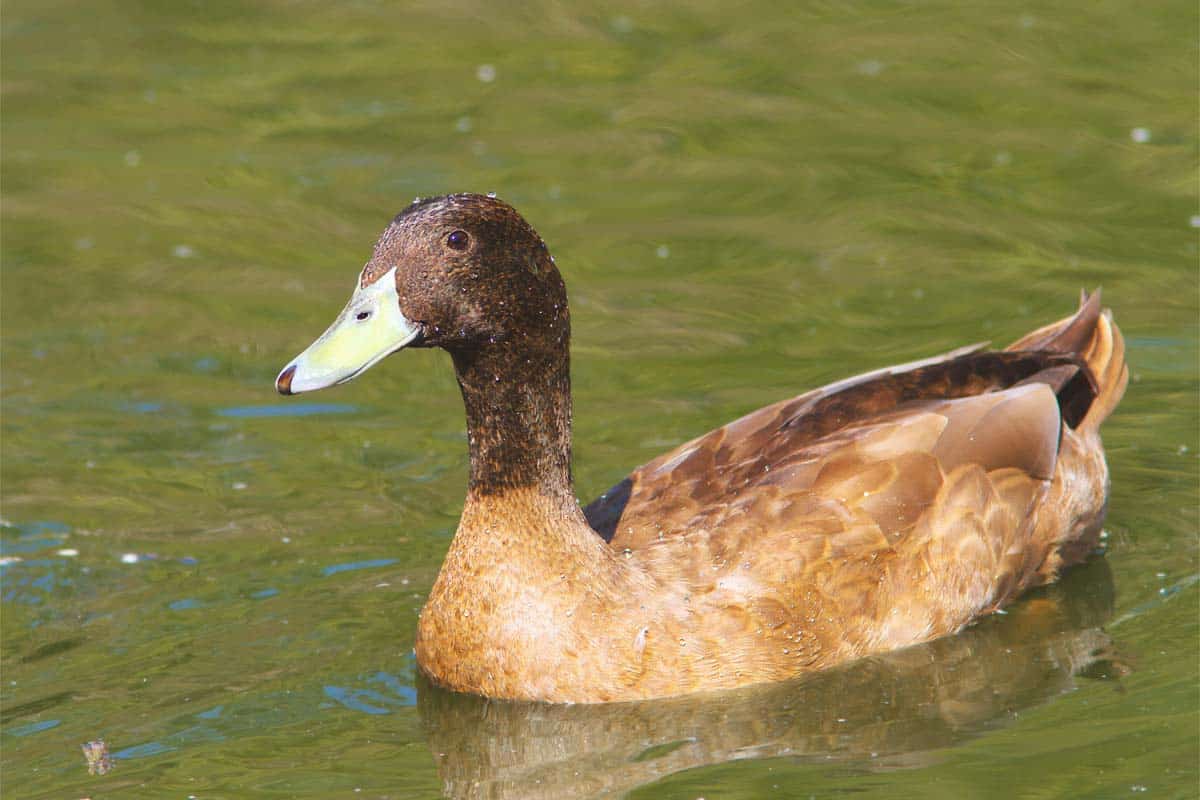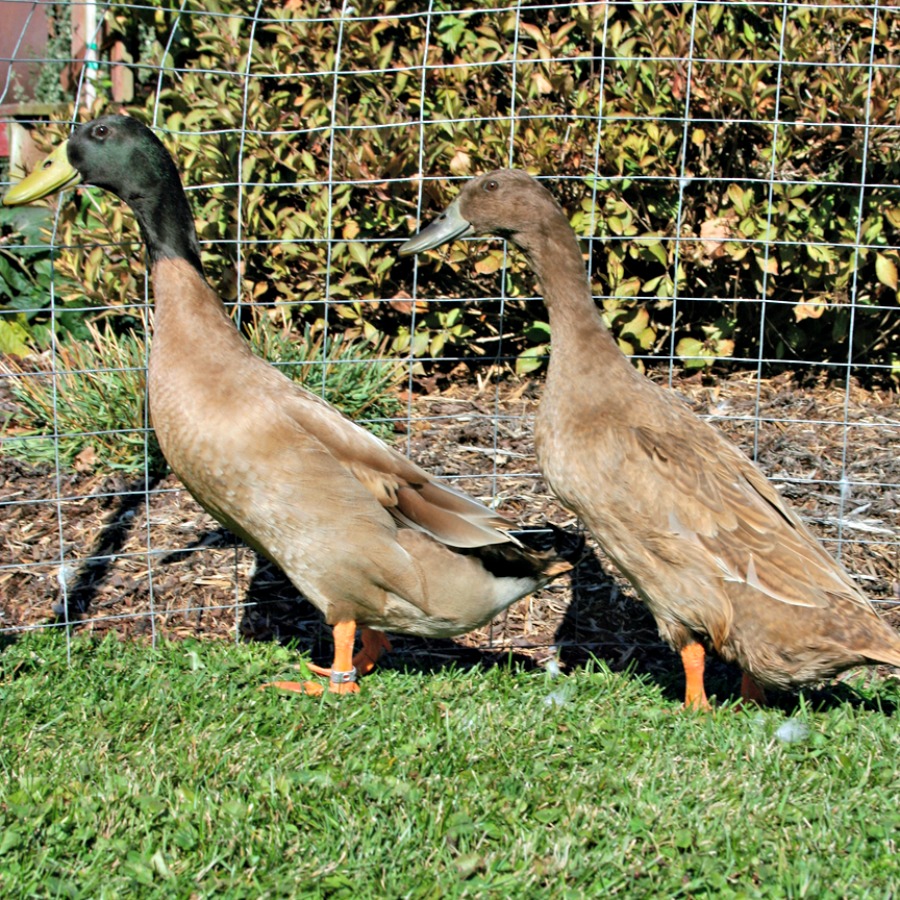Khaki ducks are a popular species for poultry husbandry; they are hardy and easy to care for. This article will provide an overview of how to care for khaki ducks in chicken husbandry. We will discuss the necessary housing and nutrition, as well as some of the common health issues that you should watch out for. By following the steps outlined here, you can ensure that your khaki ducks remain healthy and happy.
Overview of Khaki Campbell Ducks

Khaki Campbell ducks are a breed of domestic duck originating from England, primarily kept for egg production. They are highly productive and capable of laying up to 300 eggs a year. The Khaki Campbell is a relatively small duck, with an average body weight of around 4-5 pounds. They are generally white-feathered and have a light tan head and neck. They tend to be fast-growing, reaching laying age at around 6-7 months.
Characteristics
Khaki Campbells are known for their excellent egg production and are one of the most productive breeds of duck. They lay large white eggs that weigh an average of 55-60 grams and are a great source of protein. They are also hardy and relatively easy to care for, making them a popular choice for small-scale and backyard poultry husbandry.
Behavior
Khaki Campbells are generally docile and undemanding, making them a great choice for small-scale husbandry. They are also relatively quiet and can get along with other birds and animals, although they may be aggressive towards other ducks of the same sex. They are generally active foragers, foraging for a variety of insects and seeds. When kept in a free-range environment, they will typically forage for up to 12 hours a day. Khaki Campbells start laying eggs at around 6-7 months of age, with each duck capable of laying up to 300 eggs a year.
Housing Requirements for Khaki Campbell Ducks

Shelters
Khaki Campbell ducks require ample shelters to shield them from the weather, predators, and other wild animals. The shelters should be large enough to comfortably accommodate the entire flock, and should be properly ventilated to provide fresh air. The shelters should also be elevated off the ground, as ducks do not like to be near wet, muddy areas. If possible, it is also ideal to provide a covered area outside of the shelter for the ducks to access when they want to get out of the rain or sun.
Bedding
When it comes to bedding, it is best to use materials such as straw, wood shavings, or hay. These materials are absorbent and comfortable for the ducks. It is important to change the bedding regularly to keep the ducks clean and healthy. Additionally, the bedding should be kept dry and free of mold, as mold can cause respiratory infections in ducks. Finally, it is important to provide the bedding in a way that reduces dust, as ducks can develop respiratory issues when exposed to too much dust.
Feed for Khaki Campbell Ducks

Types of Feed
Khaki Campbell ducks require a diet of high-quality, nutritionally balanced feed that includes protein and carbohydrates. Ducklings need a specially formulated feed with a higher protein content than adult ducks. For this purpose, a combination of starter and grower feed is the best option. Other feed types such as layer feed and maintenance feed should also be included in their diet. It is important to ensure that the feed is free of mould, insects, and other contaminants.
Feeders
Ducks should be provided with a variety of feeders. The feeders should be located in areas that are easy to access for the ducks. It is important to provide enough feeders to accommodate all of the ducks. The feeders should also be kept clean to prevent the spread of disease. A variety of feeders such as hanging feeders, ground feeders, and trough feeders should be used.
Health Care for Khaki Campbell Ducks

Vaccinations
Khaki Campbell ducks should be vaccinated against diseases like Ranikhet, Gumboro, and Newcastle, to ensure their optimum health. Vaccinations should be done according to the recommended schedule and dosage by the vet.
Parasite Control
It is important to administer parasite control treatments to Khaki Campbell ducks at least once or twice a year. This should be done in order to prevent and manage various types of parasites such as worms, lice and mites. Proper hygiene is also essential in keeping the ducks healthy.
Breeding Khaki Campbell Ducks

When do Khaki Campbells Start Laying?
Khaki Campbell ducks start laying eggs at around 5-6 months of age. Once they start laying, they can lay up to 200 eggs each year. They lay large white eggs and can lay between 4-10 eggs per clutch.
Incubation and Hatching
Incubation and hatching of Khaki Campbell duck eggs is a relatively simple process. Duck eggs should be incubated for 28 days. The temperature should be kept at 99.5-100.2°F (37.5-37.9°C). Humidity should be kept at 55-75% during the incubation period. Once the eggs are ready to hatch, the humidity should be increased to 85-90% for the last three days. The eggs can be turned during incubation, but should not be opened or disturbed. After 28 days, the ducklings will hatch.
Handling Khaki Campbell Ducks
Picking Up Ducks
When picking up a Khaki Campbell duck, it is important to support their head and body. Gently grasp the duck by the base of its neck and wings, and lift them off the ground. Be sure to keep the duck close to your body while lifting to ensure the duck feels secure.
Handling Ducks
When handling a Khaki Campbell duck, it is important to remember that they are naturally skittish. Move slowly and speak calmly to them to help them feel more at ease. Never grab or lift a duck by the wings, tail or feet. Doing so may cause injury or significant stress to the duck. Additionally, never attempt to restrain a duck by the bill or neck.
Frequently Asked Questions
What kind of environment do Khaki Ducks need to thrive?
Temperature: Khaki Ducks prefer temperatures of 65-85°F.
Housing: Khaki Ducks require a shelter that provides protection from rain and wind, and where they can lay eggs and roost.
Nesting Areas: Khaki Ducks need a nesting area with a soft, dry bedding.
Feed: Khaki Ducks should be provided with a high-quality feed that is formulated for ducks.
Water: Khaki Ducks require fresh, clean water for drinking and preening.
Exercise: Khaki Ducks should have access to an outdoor pen or area with plenty of space to forage, swim, and exercise.
Safety: The area should be predator-proof to ensure the safety of the Khaki Ducks.
What type of food should Khaki Ducks be fed?
- Grain: Khaki Ducks should be fed a diet consisting of grains such as barley, oats and wheat, as well as corn and peas.
- Protein: In addition to grain, Khaki Ducks should be fed protein-rich foods like insects, snails, worms, and earthworms.
- Green Feed: Khaki Ducks should be provided with a variety of green feeds such as clover, alfalfa, kale, spinach and other fresh vegetables.
- Fruits and Vegetables: Fruits and vegetables such as apples, pears, grapes, carrots and other vegetables should be provided as well.
- Vitamins and Minerals: Khaki Ducks should also be supplemented with vitamins and minerals to ensure they receive a balanced diet.
Khaki Ducks should also have access to clean, fresh water at all times.
What types of predators should I be aware of when caring for Khaki Ducks?
Predators of Khaki ducks include foxes, raccoons, skunks, snapping turtles, minks, hawks, crows, and owls. To protect Khaki ducks from predators, secure fencing should be installed around the perimeter of the pen, and shelters should be provided for the ducks to take refuge in. Motion-sensing lights, scarecrows, and other deterrents can also be used to protect the ducks from predators.
How often should Khaki Ducks be given access to water?
- Daily: Khaki Ducks should be given access to water at least once daily. This should be done first thing in the morning and then again in the evening, to ensure the ducks have enough to drink throughout the day.
- Weekly: The water should be changed at least once a week, to maintain a clean and safe environment for the ducks. The water should be refreshed and disinfected to help keep the ducks healthy.
- Monthly: The water containers should be cleaned and disinfected once a month. This should be done to ensure that the ducks are not exposed to bacteria or other contaminants.
- Seasonally: The water should be checked seasonally to make sure that the ducks have access to fresh and clean water. This should be done to help promote healthy and strong ducks.
What are some common health issues and how can I prevent them?
Khaki ducks are generally quite hardy and healthy but, like all poultry, they can be prone to certain illnesses and diseases. Some of the common health issues include coccidiosis, bumblefoot, respiratory infections, parasites, and lice. To prevent these health issues, it is important to keep the ducks’ living area clean and free from dampness. Additionally, you should provide adequate space for exercise, and provide a balanced diet with plenty of fresh vegetables and protein sources. Vaccinations may also be recommended for your birds. Lastly, it is important to be alert for any signs of illness and take the affected ducks to the veterinarian for treatment.
Conclusion
Khaki ducks can make a great addition to any chicken husbandry. With the proper diet, healthcare, and housing, these ducks can provide years of enjoyment. While they can be fairly hardy and easy to care for, they do require some extra attention and care due to their unique needs. With the proper knowledge and care, any chicken husbandry can be a great place for khaki ducks.
